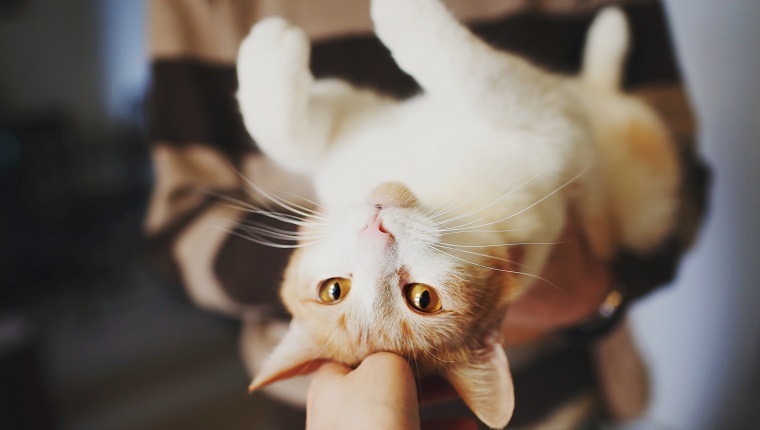Cats are savvy communicators, using nearly every part of their bodies to “talk.” They express their needs and wants in a variety of ways, especially through their body language.
Being savvy, yourself, in interpreting their language can help you bond with your cat, alleviate frustrations, and even prevent accidents.
Here are a few things your cat may be trying to communicate to you, and how you might be able to read their body language to find out what they’re saying.
Affection
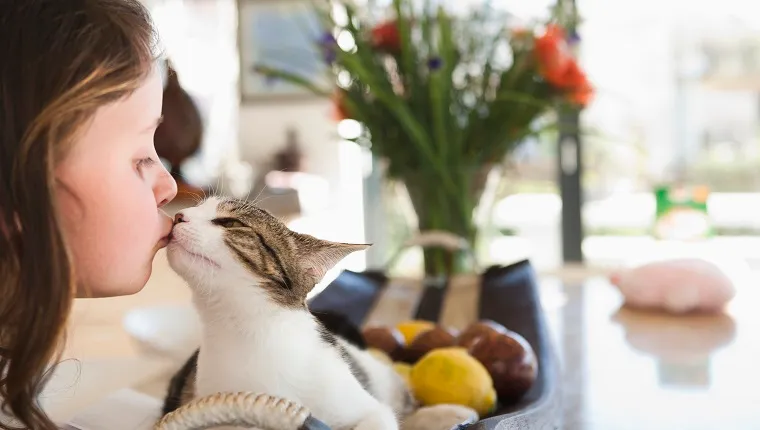
Did you know if your kitty “headbutts” or licks you, it means they really like you? Rubbing on nearby objects is called “redirected affection.”
If their tail pops straight up as they’re walking toward you, they’re happy to see you.
If your kitty is grooming in short, rapid strokes, and looking at you, they’re saying, “all is well.”
Bright eyes, perked up ears, and forward-facing whiskers mean they’re ready for some interaction.
Aggression
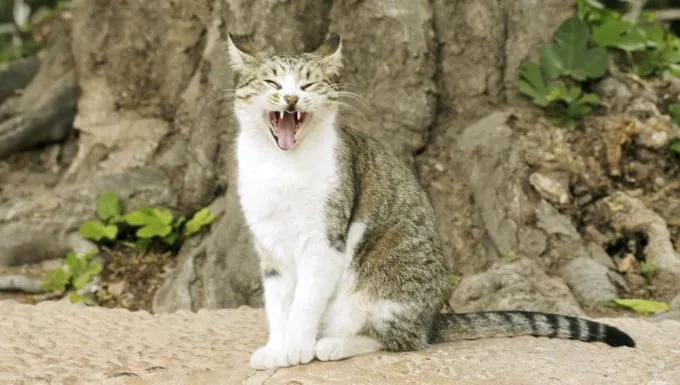
Aggression can be defensive or offensive.
A defensive cat is fearful, and reacting to a threat. They might be curled up in a ball, rolled to one side, tail tucked in close. Their ears will be flattened, pupils dilated, and they may be hissing. If the threat continues, they may launch an attack.
If you see your cat in this position, don’t approach. Stay several feet away and speak softly until they calm down — and let them come to you for reassurance afterward.
Offensive aggression is the “Halloween Cat” — hair standing up, back and tail arched, pupils huge, tongue curled, hissing or yowling. A cat in this pose is ready to — but may or may not — attack. Nevertheless, get out of the way.
Boredom
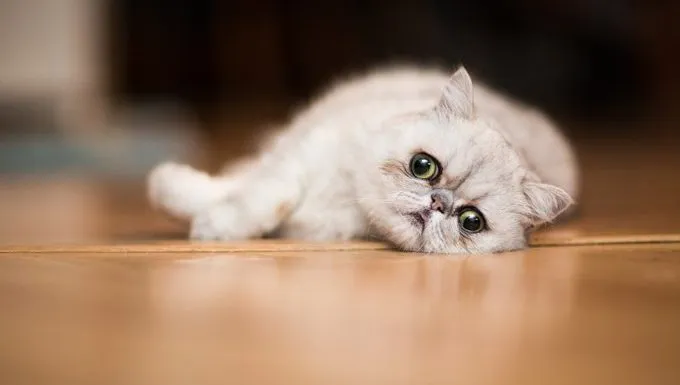
If your kitty is bored, they may groom constantly, with long, intense strokes.
Their tail might be low, at “half-mast,” or swishing slowly back and forth, telling you, “I’m not happy.”
They may pace back and forth, sigh, or talk to you as if to say, “I need something to do.”
Illness
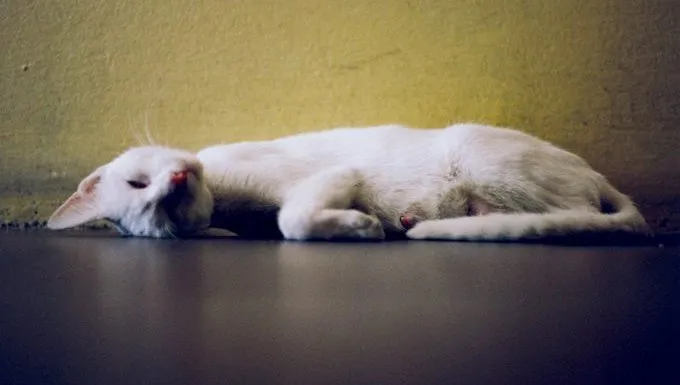
A crouched body and tucked tail may mean your kitty is in pain or ill. Look for half-closed eyes, downcast ears, or a blank expression.
Obviously a kitty lying on their side but unresponsive or breathing funny needs immediate medical attention.
Over Stimulation

Many pet parents end up bewildered — and with a few scratches — by a “sudden” attack during a play, petting, or brushing session.
Overstimulated cats sometimes respond with a burst of energy directed at the nearest object — maybe you. But there are warning signs: Their tail will begin to swish back and forth, ears will twitch forward and back, they may vocalize, or they might turn their head toward your hand.
When you see these signs, stop the activity and give kitty a time-out until their adrenaline calms down. They may still strike, however, so be prepared.
Relaxation
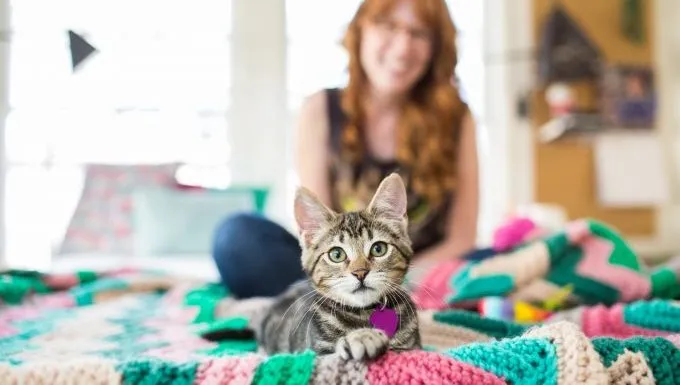
Cat parents have all seen — and envied — the postures of a relaxed cat. They just seem to melt into whatever surface they’re on.
They roll onto their backs, or pose like a “J” with their head sideways and upturned, the rest of their body lengthened and still.
Eyes can convey relaxation, too, in slow blinks, normal-sized pupils, and soft gazes.
Learning to interpret and respond to cat-talk can truly enhance your relationship with your feline. They’ll teach you, so be ready to learn.
Can you tell what your cat is thinking by their body language? What other signs do you look for? Let us know in the comments below!
